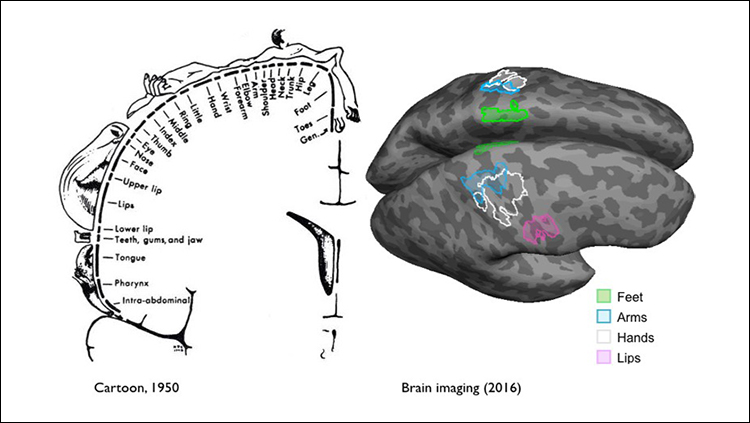Sensory and Motor Brain Plasticity Is Not Limited by Location
The new function of unused cortical regions is not necessarily determined by the function of nearby cortical regions, according to new research in adults born without one hand, published in JNeurosci.
Sensory and motor functions for each body part are represented in multiple "body maps" across the brain. Following arm-amputation, brain areas that previously operated the hand will become freed-up, and could potentially be "recruited" to work for other body parts, thus changing the brain's body maps. Previous research on such "remapping" in the cerebral cortex has suggested that the unused hand region in the cortex may only process information from body parts that neighbour the hand on the cortical body map.
Using functional magnetic resonance imaging, Hahamy and Makin measured the brain activity of adults born without one hand when they moved their arms, feet, lips, and intact hand.
Across the brain, movements of the same body parts (lips, feet, arm) activated the unused hand regions, even if these body parts do not neighbor the hand on the different body-maps. This means that relative location is not the only factor that determines brain remapping. Instead, the research team thinks that the remapping observed in the cerebral cortex may reflect a process that takes place in the basal ganglia, where the body map is condense, and therefore the hand region has many immediate neighbors. Additionally, remapping might be influenced by the way participants use their bodies in everyday life to compensate for the absence of a hand.
Read the manuscript in JNeurosci: Remapping in Cerebral and Cerebellar Cortices Is Not Restricted by Somatotopy





















